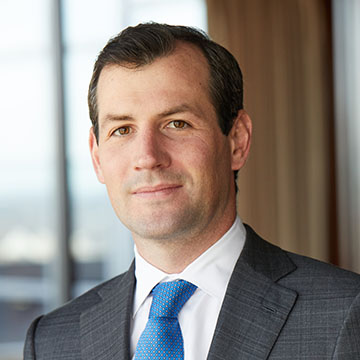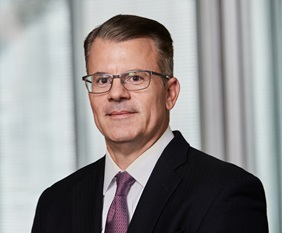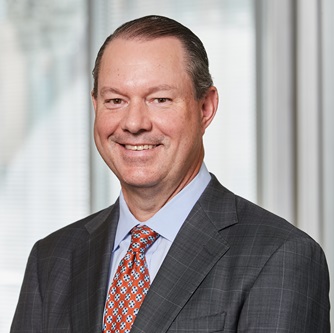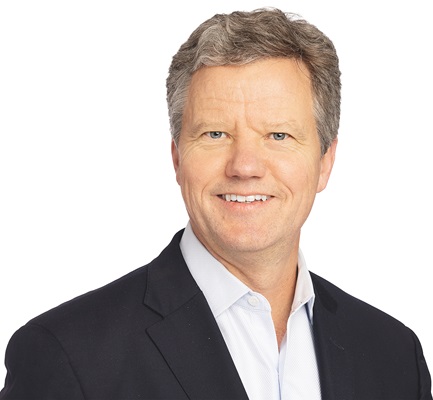
Key family offices, whose wealth developed from other industries, are filling in oil and gas investment gaps left by the flight of endowment and institutional capital from the space. (Source: Shutterstock.com)
Generational wealth has long been invested in oil and gas, but it has generally come from families whose fortunes were found in the field. That’s changing. Or, it’s branching out.
And old money earned in other industries is making its way to oil and gas now more than ever.
In some cases, it starts with a handshake.
Witt Stephens founded Stephens Inc. in 1933, betting on municipal education and Arkansas highways bonds.

“That was really the first slug of capital that came into the family,” John Stephens, Witt’s grand-nephew, told Oil and Gas Investor. “[The bonds] were trading at pennies on the dollar during the Great Depression. He bought them in 1933, they paid off in ’43, so he used that initial source of capital to build a business in a municipal bond space.”
Witt made other investments in the years that followed. Meanwhile, he saw the potential in his brother, Jack, who was 16 years younger than Witt, and sent him to college. Jack—John’s grandfather—graduated from the U.S. Naval Academy in an accelerated class in 1946, then went to work on Wall Street. (The academy named the football field at Navy-Marine Corps Memorial Stadium “Jack Stephens Field” after Jack made a donation in 2003.) Jack returned to Arkansas on a handshake deal with his brother, which made him a 50-50 partner in the municipal bond company that Witt had built.
The firm made its first oil and gas investment in 1948. Inside a decade, the industry became a business unit of the firm, and in 1956, Witt began to manage those investments and others, such as real estate. Still a partner with the original firm, that branch—Stephens Natural Resources—remains in business and the founder’s heir, Witt Stephens Jr., is chairman of the board.
Stephens Inc. continues to invest in oil and gas through its family office, Stephens Capital Partners. The industry represents about 25% of the portfolio.
“We all agreed that felt right,” John Stephens said. “I would add that, given the themes we’re seeing and our conviction in the space as an investment area right now, I think that could grow over the next five to 10 years as a portion of our overall portfolio.”

The best calls we can make is when we call people and say, ‘We’re excited about this, we’re doing it ourselves. Would you like to come into a deal with us?’ That’s what’s happening in the oil and gas space.—John Stephens, Stephens
John Stephens is a managing director of the investment banking group, working in family advisory services where he specifically covers family offices.
“And the best calls we can make is when we call people and say, ‘We’re excited about this, we’re doing it ourselves. Would you like to come into a deal with us?’ That’s what’s happening in the oil and gas space,” Stephens said.
Stephens has long been keen on the private placement of equity, said Keith Behrens, managing director and head of the firm’s energy investment banking group.
“Historically we would place that capital with private equity funds like a Blackstone or an EnCap. [But] during COVID, and even a little before COVID, that investment activity with private equity funds slowed down. The funds were holding onto investments that they couldn’t sell. They had a hard time raising capital,” he said.
Brad Nelson, a managing director in Behrens’ group, said that particularly the private equity groups along the coasts were “really not investing in conventional hydrocarbon transactions anymore, or certainly had reduced the amount and the number of deals” under consideration.
“The important part of that from our perspective was that it had a meaningful impact on valuations. And so when you have that amount of capital, and pretty much leave the space, valuations came down, which I do think was impactful on families that eventually came into the sector—and are still looking at opportunities in the sector,” he said.

Stephens’ family advisory group was going strong, and so the energy investment team began working more closely with them.
“We still wanted to do private placements and source that type of capital for our clients, but we just wanted to find alternative sources of equity capital given the slow down with PE funds,” Behrens said.
The teamwork has grown into a coordinated effort.
John Stephens’ group had identified other families that liked investing in oil and gas, and Behrens’ group includes four petroleum engineers and a geologist who bring technical expertise to the investments.
“We found that to be very important to help families in their evaluations. They kind of rely on those folks to help them do their technical due diligence and help on their technical due diligence. That’s important,” Behrens said. “The fact that we’re putting our own money in deals, I think gives us a lot of credibility with family offices like [A.G. Hill Partners].”
Stephens’ backstory was compelling to the leadership at A.G. Hill Partners, a family office that manages the wealth of Al Hill Jr., the grandson of legendary oil tycoon H.L. Hunt.
“We’ve always had an investment exposure to the sector, but things really started to change noticeably around the time of COVID and immediately following COVID,” said Joe O’Brien, president and CEO of A.G. Hill Partners.
O’Brien said the change was brought about a confluence of three things: the large amount of capital the sector had lost between 2014 and 2020; the temporary price destruction wrought by COVID; and the ESG pressures on endowments and foundations to reduce or eliminate their allocations to the energy sector.

“As all of those things came to together in late 2020 and early 2021, we saw increasing opportunities for us to deploy capital into deals with very established, successful entrepreneurs. These were people we never otherwise would had the opportunity to back or meet or invest with because they were always backed by private equity previously,” he said. “We made the decision in 2021 to focus a lot of our time and capital or resources on the energy sector. Today, energy represents about a third of our private equity exposure in total, and it represents about 20% of our public equity exposure. We’re a broad family office with real estate, private equity and public equity, and energy is an important piece of the private and public part of what we do.”
Family-sized
Last summer, O’Brien’s team anchored a group of five family offices and two private equity firms to establish the PW Consortium to pursue the acquisition of PureWest Energy, the largest natural gas producer in Wyoming. The $1.8 billion buy required more than $400 million of equity capital. The collective pooled funds and then did asset financing with Wincoram Asset Management for additional capital that funded the deal.
“There was a banker representing the seller, there was a banker who represented us as the buyer. It was somewhat competitive,” O’Brien said. “There were a couple of other bidders looking at it, and ultimately we prevailed with the syndicate that we put together.”
The consortium has since disbanded, but the concept remains, he said.

We’ve had a lot of luck in finding non-oil and gas family offices that are looking to make big commitments, $100 million-plus commitments to a particular deal. And really, John Stephens has been key in that effort. —Keith Behrens, Stephens
Behrens said private placement deal size hasn’t changed much since the days of teaming with private equity.
“They’re generally from $150 million to about $500 million. We’re still working on the same size deals, but we used to go down the street to EnCap or to a Blackstone and they would take down the whole deal. They’d make a commitment for all of that capital,” he said. “Now … it’s a syndicate of family offices generally that are making that commitment and they’re led by a family office like Joe’s family office.”
The “anchor” of a family office with the reputation for excellence and experience with oil and gas, such as A.G. Hill, is key to bringing other generational wealth—that doesn’t have energy industry expertise—to the table.
‘[Those families] get a lot of comfort in that, and so that’s how a lot of these deals are playing out,” Behrens said.
“We’ve had a lot of luck in finding non-oil and gas family offices that are looking to make big commitments, $100 million-plus commitments to a particular deal. And really, John Stephens has been key in that effort. If it was just Brad and I calling, I don’t know if we could get through. That’s been a really important point in trying to bring big syndicate together.”
RELATED
It’s All Relative: Family Oil Companies Attract Huge M&A Attention
Branching out
Last year, Stephens Capital Partners brought together a couple dozen families to round out the equity needed for a deal involving a landfill in Lea County, New Mexico, which serves as a waste management element of the oil and gas industry, Nelson said.

We’re investing capital generationally—not for a specific fund of life. —Joe O’Brien, A.G. Hill Partners
The firm has an upstream deal in the works and has a committed “anchor” family. While it has momentum, it’s not complete and so the parties are not ready to publicly discuss it, he said.
There are a few reasons that generational family wealth managers outside of oil and gas have had the temerity to venture into the industry. They see the returns, which despite the existence of general market angst, remain compelling.
Regardless of where the wealth originated—municipal bonds, aviation or the automotive industry—generational investors are looking to win the long game.
Private equity firms engage deals with an exit strategy in mind, Behrens said.
“You had to time everything right to have a good return on your investment if you’re only holding investments for three to five years,” he said. “But family offices don’t have time limits on their funds. John mentioned investments we’ve made in the ’50s that the Stephens family still holds.”
That enables those families to hold their investments through various cycles.
“It’s one way I think the families get it right, and that the private equity funds always had challenges with,” Behrens said.
A.G. Hill follows the same longer hold policy, O’Brien said.
“We’re investing capital generationally—not for a specific fund of life. And so, as Keith points out, many private equity funds typically have a 10-year life. They have an investment period, they have a harvesting period, and so they may not be able to ride that commodity curve through longer cycles the way a family can,” he said.
Recommended Reading
E&P Highlights: Feb. 3, 2025
2025-02-03 - Here’s a roundup of the latest E&P headlines, from a forecast of rising global land rig activity to new contracts.
Watch for Falling Gas DUCs: E&Ps Resume Completions at $4 Gas
2025-01-23 - Drilled but uncompleted (DUC) gas wells that totaled some 500 into September 2024 have declined to just under 400, according to a J.P. Morgan Securities analysis of Enverus data.
Sabine Oil & Gas to Add 4th Haynesville Rig as Gas Prices Rise
2025-03-19 - Sabine, owned by Japanese firm Osaka Oil & Gas, will add a fourth rig on its East Texas leasehold next month, President and CEO Carl Isaac said.
E&P Highlights: Jan. 27, 2025
2025-01-27 - Here’s a roundup of the latest E&P headlines including new drilling in the eastern Mediterranean and new contracts in Australia.
Analysts’ Oilfield Services Forecast: Muddling Through 2025
2025-01-21 - Industry analysts see flat spending and production affecting key OFS players in the year ahead.
Comments
Add new comment
This conversation is moderated according to Hart Energy community rules. Please read the rules before joining the discussion. If you’re experiencing any technical problems, please contact our customer care team.





